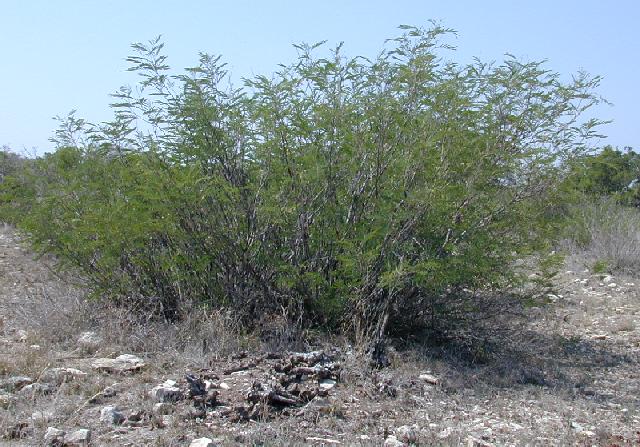| Guajillo is a spreading shrub that sprouts prolifically from the base when disturbed. The plant is usually a medium-sized shrub but can grow into a small tree to 15 feet tall. The leaves are bipinnate with five to nine pairs of pinnae and 30 to 50 pairs of leaflets. They are also fernlike in appearance and can reach a length of 4 to 6 inches long. The white flowers are found blooming from November to March. Branches are often armed with short recurved prickles. Guajillo grows in sandy soils and shallow ridge sites in south Texas and the very southern portion of the Texas Hill Country. The nectar is used by bees to make a light, sweet honey. The leaves and seeds are used by cattle, sheep, goats, and deer. At high concentrations, guajillo can be toxic to domestic livestock. The leaves contain excitatory amine compounds that cause "guajillo wobbles" in sheep and goats. The signs of guajillo poisoning include uncoordinated legs, downed animals with normal appetite, and death.
|
